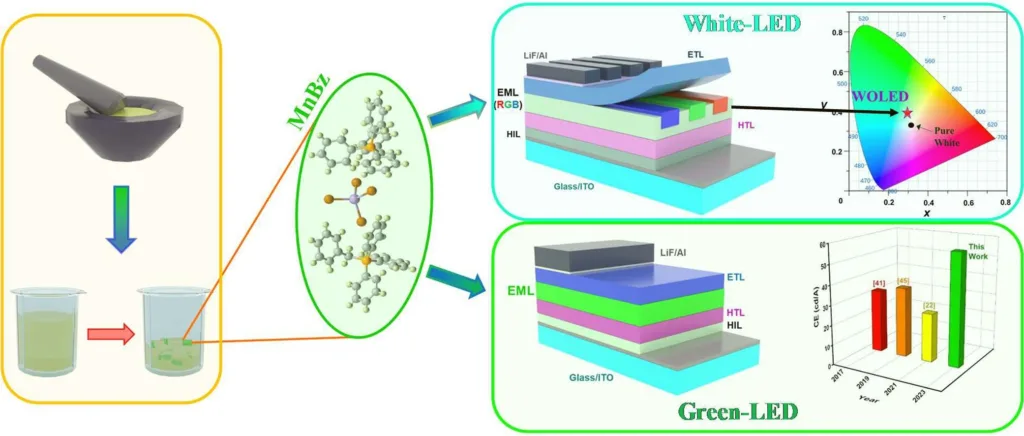Researchers at Dongguk University have created a novel manganese-based complex that could make bright, efficient organic LED lighting widely accessible and affordable.

The new complex, called MnBz, emits a vibrant green light when electrically stimulated. Dongguk assistant professor Vijaya Gopalan Sree and her research team developed MnBz using abundant raw materials – manganese and benzyltriphenylphosphonium bromide. This contrasts starkly with existing commercial OLED compounds, which rely on scarce, precious metals like platinum and gold.
MnBz proved highly effective when tested in light-emitting devices. The researchers used it to develop the first ever manganese-based white OLED, which produced a bright white light with excellent color rendering comparable to natural light. They also created a MnBz-based green OLED that delivered record efficiency and brightness among similar devices.
The success of these prototypes highlights the promise of earth-abundant metal complexes for affordable, sustainable OLED advancement. As Dr. Sree explained, “Replacing expensive rare earth metals with crystalline complexes based on transition metals can help us achieve vibrant, energy-efficient lighting and displays at a far lower cost.”
If scalable and durable, these efficient MnBz-based OLEDs could find widespread use lighting homes and commercial spaces while easing pressure on energy grids. Dr. Sree suggests this work may ultimately “transform the way we illuminate our world.”
Reference
Gopalan Sree, V., Jana, A., Chan Cho, S., Uck Lee, S., Cho, S., Inn Sohn, J., & Im, H. (2023). Green and warm-white light-emitting diodes enabled by zero-dimensional green-emitting Mn(II) bromide complex with record high efficiency. Chemical Engineering Journal, 474, 145936. https://doi.org/10.1016/j.cej.2023.145936

